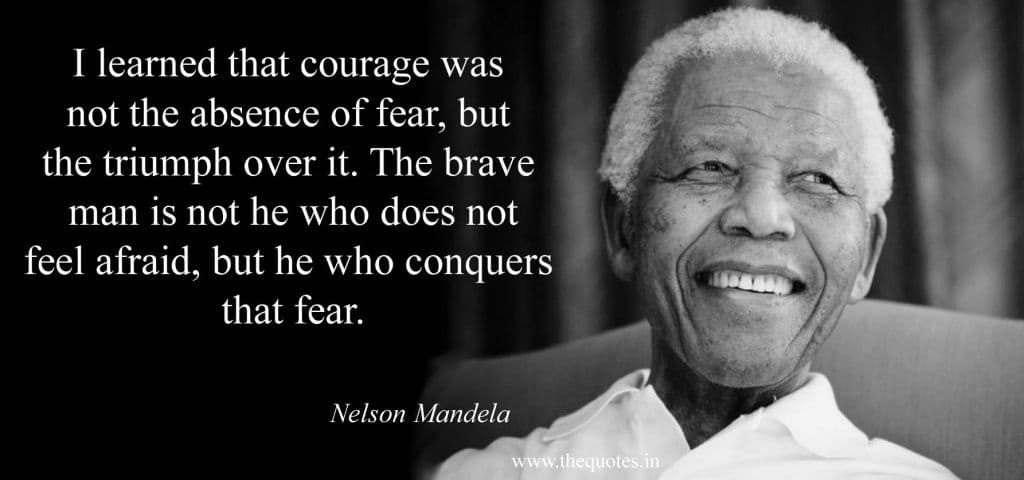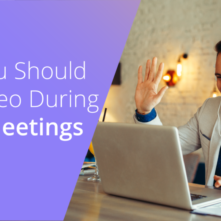How to Build Authentic Rapport FAST with Prospects [Webinar Recording]
How to Build Authentic Rapport FAST with Prospects
[Video Recording]
[Video Recording]
[Video Recording]

I can’t tell you the number of calls that I listen to (or receive) where salespeople do not schedule next steps before ending the call. It’s so basic, so fundamental, yet so often neglected.
READ: Call Bridging 101: Paving the Way for a Follow-up Sales Call
Whether it’s an initial cold call, a discovery session, a product demo, or (I shudder at the thought) a proposal review, the lack of direction is startling.
Below I’ll share the importance of next steps, why reps aren’t doing it, and how managers can ensure their reps are scheduling next steps.
READ: Tips for Mastering Call Coaching
The sales dance is a series of well-coordinated steps. Missing one can mean stumbling or even falling flat. As someone who’s been in the sales arena for years, I can’t stress enough the importance of clear next steps. It’s not just about closing the current call; it’s about paving the way for the next one. So, let’s get back to basics, prioritize efficiency, and drive our sales with precision.

If you’re reading this, you’ve probably made an outbound sales call. You’ve probably made thousands. Stop and think for a second just how many things about this take guts – it takes sales confidence. Calling a stranger not expecting your call and essentially asking them for money. Betting a chunk of your family’s income on your abilities. Try to pretend you’ve never done it before. Can you remember your initial hesitance? The questions you had? The doubts and fears?
This is how our new hires and yet-to-be-hired people feel. We forget that sometimes. This is scary stuff.
It takes confidence in yourself, your ability to connect, to think on your feet, to pull the right phrase, the right answer, the right joke.
Not all of us are born with this kind of confidence – the deep knowing, the foundation, the deep belief in one’s own abilities. And many of those people are in sales.
How do we do it? With another word called bravery. Bravery isn’t the same as confidence.

I describe bravery to my kids as feeling scared and doing it anyway. “I know the hallway is dark honey. I know you feel scared. That’s why they call it being brave. It wouldn’t be bravery if you weren’t scared. You’ll be ok.” Bravery is suiting up! Putting on the superhero cape and facing the bad guys.
We know this as “fake it till you make it.”
I grew up in a very unstable home life. We moved so much that every 2 years was a new school for me.
New girl.
New school.
New classroom.
New teacher.
22 pairs of eyes turn and stare at the new girl.
So I guess I know something about bravery.
I think that is why I’m drawn to sales. We push bravery in sales. Bravery is being a little terrified they’ll hang up or say no and doing it anyway. But confidence is being absolutely sure they shouldn’t. Really knowing and believing the value of my product and service, plus the value of me.
Which do you think sounds better on the phone? Confidence or bravery?
Confidence. Sure! Confidence is what sells. It’s what permits the deeper questions, the customer education, and the ability to challenge. It makes the extra dials, keeps customers on the phone, and overcomes objections. Confidence asks for referrals. And then does it again. And again. For years.
Confidence doesn’t burn out after a year and a half. (the average lifespan of an inside sales rep). But bravery sure does. There are only so many days we can put on that cape and that mask and pick up that phone. Suit up. Dial. Ask.
New girl. New school. New classroom. New teacher. 22 pairs of eyes…
Bravery is not a recipe for long-term success. And I assert that our sport of sales can benefit from going beyond bravery…to confidence.
But there’s a step between bravery and confidence and it’s called courage.
Courage isn’t “fake it till you make it”. Courage is the “making it”. And to make it, we have to go through the fear. Not over the fear, not around the fear, through the fear. We have to stand in it.
Quietly.
And it’s terrifying.

Courage is facing your fears. Naming them and then tackling them with an open mind and heart. It’s being vulnerable, being honest, and being open. It’s considering the rejection, the loss, or the humiliation and being OK with it and being you – a stronger you – on the other side. It’s letting others in to see.
It’s standing in the darkness. Until you are not scared anymore.
Like many, I have buckets of bravery, but not nearly enough confidence. And two things dawned on me recently:
We’re asking a room full of strangers to pick up the phone and try something they learned 20 minutes ago. And we do it, together. And our facilitators stand with them in the dark. We listen, we encourage, we coach. We show everyone in the room that it’s OK to fail, it’s fun to mess up, and they don’t have to be perfect. In fact, we REWARD imperfection and risk-taking and we shine a little light into the dark room of courage. And you’ll never guess what comes out on the other side…
Confidence.
We’re in the business of teaching sales confidence. Our loyal clients and students probably already knew this. It feels like such a big revelation that it’s almost silly it took me ten years to figure it out. But now that I’m here? I’m immensely proud. I’ve always been proud of our model, our results, and the feedback we get that we change lives. But now I see how aligned Factor 8 is with my own path, my personal passions – and fears, and I’ve fallen in love with this little company all over again.
My challenge to you: Ask yourself if you’re pushing bravery at work or instilling confidence. Remember that bravery burns out and confidence is what sells. If you can help your teams grow the confidence, you’ll grow your results, you’ll keep your team longer, and you’ll all grow as humans. And isn’t that what it’s really all about?
[Video Recording]

Recently, I shared a panel with Bob Perkins, Morgan Ingram, Shay Keeler, and Dan Breault where we talked about the move to virtual selling.
It was delightful because lately, I’ve mostly been talking with traditional/field sales leaders who are transitioning their teams to virtual selling. We talk about the constraints, the challenges, and the new skills these teams need when they lose face-to-face.
The panel of long-time inside sales leaders had the opposite experience. Our teams are loving the wave of video that is sweeping all industries! We’ve literally been selling blind for 20 years and it’s a whole new Zoom world.
Whether you’re inside or field selling, we’re all virtual now. If your team is struggling to adapt and/or thrive with video selling, here are a few remote selling tips to help.
First, YES, you want to turn cameras on with customers. Some crazy stats were thrown around during the ExecVision Momentum panel discussion (150% increase in close rate?!). I couldn’t substantiate that one, but I did find data from Gong saying webcams are used 40% more in successful (won) vs. unsuccessful (lost) deals.
Zoom and Forbes cite that 62% of executives agree video conferencing significantly improves the quality of communication.
Not convinced? Here’s an oldie but a goodie – only about 45% of a message is content and tone while 55% is body language.
Even if your customer/prospect doesn’t turn on video, you should.
The last stat alone has been around for decades, so I’m going to go out on a limb and say if you or your team are struggling with adoption, isn’t due to buy-in, it’s due to one of these common resistance points:
Let’s attack these, one by one, with the lens of helping leaders coach their teams to adoption. Here are my remote-selling tips using video.
#1 – If your team doesn’t feel camera ready, share a few tips:
Leaders, it’s OK to go here. It’s your job to go here. Don’t let your team show up in a ballcap and torn T-shirt with backlighting and a webcam that looks up their nose. It’s on you.
#2 – If your customer doesn’t use video, it’s OK to ask them to do so. Here’s what I say:
“Hey, if you’re comfortable, I’d love to meet you face-to-face via video! Don’t worry, I’ve got on yoga pants and flip flops too – and it definitely isn’t a great hair day. No judgment!”
Video is a chance to connect face-to-face and asking for it is another opportunity to get human and connect at this level. I openly share that my kids may interrupt wearing their underoos and thereby make it OK for them to be human too.
You may also try setting it up ahead of time. When booking/sending the meeting request, let them know you’ll send it with video and you hope they’ll come on camera and meet face-to-face.
Be prepared to walk a customer through the video process – we all use different technology and they may feel unprepared and uncomfortable as well. Helping them through this further connects you.
When they do get on screen, take a moment to stay in this human space. Comment on background, pictures, window scenes – anything BUT the pile of laundry and dishes that might embarrass them.
#3 If the setup is the issue, find the budget to help. Get a good camera, upgrade to get the virtual background, buy a divider screen, and buy a $30 light. Help set up the camera so it’s a few feet away (or use the Zoom feature) so their head and shoulders are in the frame down to about chest height.
Partner with your team to make this happen, because virtual and video are NOT going away. Don’t let your customers get out in front of you because you didn’t spend $100 to help your team look good and feel confident. This action is ours, leaders!
#4 – The final objection is ours to own as well. If old habits and resistance to change prevent the cameras, help them build these muscles. Run your 1:1 and team meetings with cameras and do a few joint video customer calls. They’ll see it work, feel the connection, and use these new muscles to help the resistance fade.
In short, we need to set the expectation, partner to help us look and feel good, and work together to build new habits. If we aren’t, we’re simply leaving money on the table.
[Video Recording]
[“Sales Shot” Workshop]

Congratulations on your promotion to AE! Transitioning from an appointment setter, qualifier or SDR/BDR to an Account Executive who carries a revenue quota and closes deals is a BFD. Here are five skills that can help you make goal faster!
1. Slow WAY Down. As a BDR, the game was speed. A hundred calls, ten conversations, and one yes. The good calls were under 10 minutes and you were careful not to dive too deep. As an Account Executive, it’s a common mistake to try and also pack your calendar with cookie-cutter demos in the hopes 10% will close. Be better.
The Account Executive’s role is to add so much value to the prospect that they overcome their resistance to change and buy. That won’t happen in 10 minutes or 60 minutes, and it won’t happen the same way each time. So slow down and get to know the prospect. Why did they take the meeting? What’s happening in their world? Why is it a challenge? Why is it important to fix? What have they tried? What happens when it’s better?I could keep going here, but I hope you get the picture. Spend time instead discovering their situation AND their top priorities and values because these are their motivators to change. At Factor 8, we’ll give you a gold star if you don’t share your screen or your solution once in the first call. Truth: we don’t give out a lot of gold stars.
2. Be SWIIFT℠. Heard of that before? It’s the opposite of WIIFM and it means, “So, What’s In It For Them?” We want you to take this to the extreme and make as many of your calls as possible about them instead of you. The average AE will ask 3-4 questions and then launch into their slides/demo/solution.
This hurts them in several ways:
So, go deeper and seek to understand. Seek to help. Make it all about them for the entire first call and as much of the second and third as possible. Even during your demo, we teach you to only cover a specific and abbreviated number of items and to stop sharing at least 50% of the call. Ditch the sales speak and value props and pitches and competitive data and do all you can to understand and add value.
3. Bridge Every Call! Unlike your old job, closing deals will take multiple calls. Always set up your next call before getting off this one. Like, always. It’s called a bridge. The best bridges have appointments booked in the calendar with invitations and agendas sent immediately. If we can’t get that, they at the very least agree on a day you will call back (and try to get them to block the time!). This simple skill takes 3 minutes to accomplish and will save 3 hours of time chasing down leads you thought were interested but who won’t return your emails. It’s sort of like “never wake a sleeping baby” – never hang up on a live prospect (without bridging to the next call).
4. Be a Calendar Ninja. Suddenly you need time in your day for more than just outbound appointment setting (but pretty please still do that too!) Get strategic and block times in your calendar for research, client meetings, follow-ups, emails, and outbound prospecting. You’ll also need time to build your custom proposals/demos/solutions for clients. It’s a lot more to juggle! You may even be used to a tool telling you who to call and when if you used a great sales cadence solution like Outreach. But now you need to be strategic about when you call, build, respond, and research. It’s easy to get buried in emails and snoozed CRM tasks, and NOT systematically and proactively review your CRM for actions to take to keep your pipe full and leads warm. It’s a common mistake and it takes serious time management skills.
5. Master the Meeting. It can be intimidating to move from a 10-minute 1:1 call to running a pitch to a prospect team. 60 minutes, 5 people, and LOTS of pressure (and doing it virtually to boot!) To run a killer sales meeting, always start with an agenda and introductions. Think of it like you’re hosting an open house. Thank people for coming, learn something about them, find out their goals, and put them at ease. Remember, these meetings are as much about YOU as your solution, because people buy from people they like, and nobody likes being instantly pitched!
Try dressing up a level, add some professional flair to your background, use your rapport-building techniques, and do everything you can to get cameras ON and screen sharing OFF (a Gong study showed that discovery meetings run with you sharing slides means you do most of the talking instead of the other way around). Share your agenda and ask if they have specific questions or items to add before diving into the meat of the meeting. And always be sure the meat starts with SWIIFT℠ questions instead of your pitch! Practice kicking off meetings with a few colleagues until you sound and feel confident!
There’s a lot to master in your new role, but these five skills will help you stay in front of the learning curve!
[“Sales Shot” Workshop]